U.S. Government Losing $100,000,000 Per Year On Nickel And Penny Production
The U.S. Government continues to lose money on production of two coins that people barely use anymore.
The United States Government continues to lose money minting coins that almost nobody is using:
The U.S. Mint has some good news and bad news in its latest biennial report to Congress. The good news is that we’re wasting less money on pennies and nickels. The bad news is we’re still wasting money on pennies and nickels.
Production costs for all four major coin types fell in fiscal year 2014 due to the falling price of copper, one of the primary metals used to make coins. The Mint estimates it saved $29 million this year compared to last year on account of lower copper prices.
But it continues to lose money on pennies and nickels. It now costs $1.62 to make a dollar’s worth of nickels, and $1.66 to make a dollar’s worth of pennies. By contrast it costs only 36 cents to make a dollar’s worth of quarters, and 40 cents for a buck of dimes. Paper dollar bills are even more cost-effective.
As recently as the early 2000s, the Mint was still turning a small profit on the nickels and pennies it produced. But the costs of those coins spiked in 2006, and haven’t broken even since then.
As of 2013 taxpayers were losing $105 million annually on penny and nickel production. This report doesn’t include total production numbers, so we can’t calculate costs at the moment. But it’s safe to assume that losses on pennies and nickels decreased this year, in line with their falling cost.
The Mint could decrease production costs even further, especially on dimes and quarters, by using different metal compositions in the production of those coins. But that would change their weight and their “electromagnetic signature,” which would drive vending machines haywire. It would require a multi-billion dollar upgrade of coin-operated machines nationally, which dwarfs the few million that might be saved from adjusting the coins’ metal composition.
But ditching the penny and nickel would cost literally nothing — imagine, a $100 million annual savings with a flourish of the executive pen.
The Washington Post’s Christopher Ingraham has several charts at the link, but this one, which shows what it costs to produce a dollars worth of each of America’s coins, and the dollar bill, tells the tale the best:
Looking at this from a rational point of view, there is really only one thing we ought to be doing here. We ought be eliminating production of both pennies and nickles. To the extent that there is an issue regarding pricing for people who prefer to pay in cash, prices can be rounded up or down as appropriate according to rules set by Congress. At least to some extent, this will lead to a small increase in prices for goods, I suppose, but in the long run that increased price would likely have less of an impact on the economy than the $100,000,000 per year that is spent making coins that nobody appears to be using. Additionally, there would be no need to do any rounding for electronic transactions, and it would seem to be clearly within Congressional authority to differentiate between the two. As Ingraham notes, though, there appear to be some powerful political lobbies on the side of keeping the coins notwithstanding the fact that they are money losers that serve no useful purpose. Primary among these, of course, are the companies that mine the copper and other metals used in production of coins. While this industry would continue to benefit from the production of quarters and dimes, and logically would be the beneficiary if we ever do get our senses about us and shift to dollar coins instead of paper dollar bills, there would still be somewhat of a hit if nickles and dimes suddenly went out of existence. Also apparently lobbying for the continued production of these coins are companies like Coinstar that make money from consumers who seek to find a way to turn their coins into, well, something more usable and convenient. Absent all those pennies and nickles that pile up in jars across America, they’d take a big hit to their business model as well.
There have been other suggestions regarding how to deal with this situation, including giving the Mint the authority to use alternative metals in the production of these coins, but in the end these seem like stop-gap measures. In the end, the penny is most assuredly irrelevant to daily transactions and the nickel likely is as well. Those facts, combined with the fact that we’re losing money on manufacturing both coins would seem to suggest the obvious solution Dump the penny and the nickel. They may have served a purpose in the past, but they clearly don’t now and they aren’t worth losing money on merely for sentimental value.
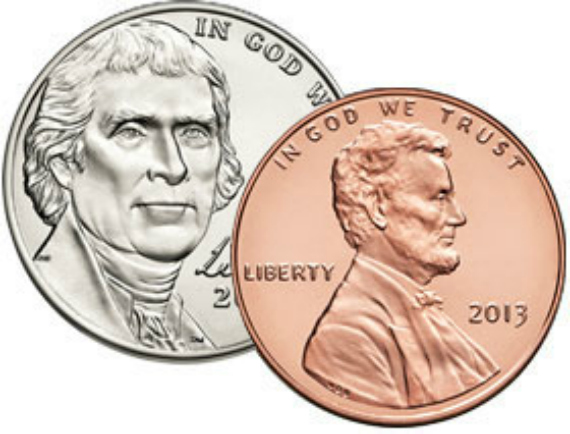
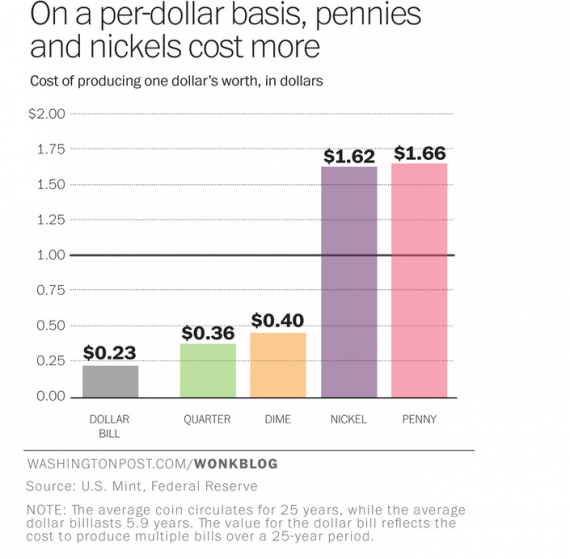

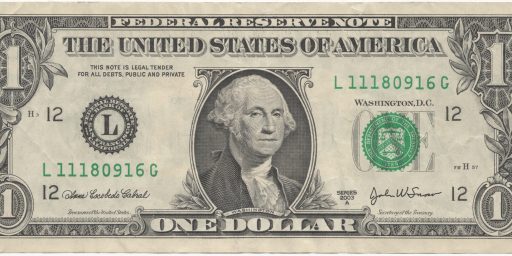
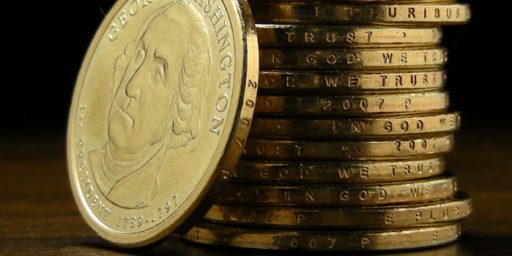
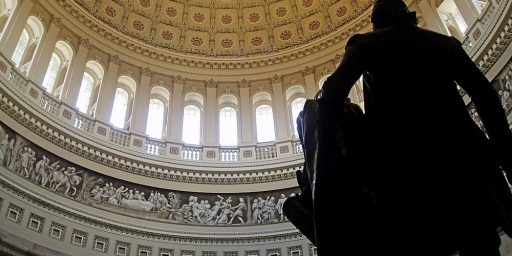
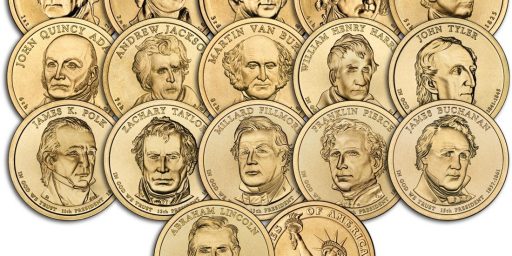
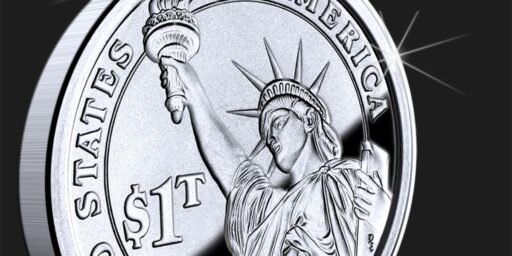
I’m curious (and am too lazy/am at work) to find out how much the U.S. loses by sticking with paper $1 bills rather than switching to the more durable and useful coins. (I know we have coins, but consumer habits aren’t going to change when the method they are used to is more readily available).
I’m betting it’s close to or higher than the waste on pennies and nickels.
As the owner of a game and comic shop I can tell you that nickles and pennies get used frequently. Now that may be different else where, but I see more of those blasted things that I care to.
@Vast Variety:
You must not be very good at setting prices, then.
@Vast Variety: “As the owner of a game and comic shop I can tell you that nickles and pennies get used frequently.”
Yes, but is that usage really important? If a single issue of a comic book, plus tax, ends up costing $3.08, then someone who gives you exact change is going to give you a nickel and three pennies, but does it really change the world if that purchase gets rounded off to $3.10?
There was a time when I was a kid when pennies and nickels were actually useful in that you could buy things for $0.05 or less: my local corner store sold individual tootsie rolls for two cents or something like that. These days, it’s almost impossible to find any retail object you can buy off the shelf for five cents or less in cash. Last week, I bought a single washer at a hardware store, but it cost twenty cents.
I started the day with no change and now I have both nickels and pennies in my pocket…so someone is using them.
I would just as soon they didn’t.
Montana (or some other no-sales-tax-state) should lead the way and unilaterally do away with the penny. Other states can follow, until Illinois finally gives in.
@Neil Hudelson: At least paper bills are convenient, so we’re getting something for our money. Pennies are both a waste of money and a hassle.
While there is certainly no good argument for continuing production of pennies or nickels, I’m not quite sure why you felt the need to go off on a tangent about paper dollar bills. Hobby horse?
I like the idea of rounding all prices to the nearest dime for cash transactions. That simplifies the arithmetic involved, lets the government save some money, and does not significantly change the price of anything. It doesn’t even require that you change the posted price, as anyone who looks at gasoline prices could tell you.
Canada managed to eliminate its penny a few years back. I would like to see the US do the same thing, but I am pessimistic that it will happen anytime soon, due to the US’s stagnant political system and influence by lobbyists. Obama recently came out in favor of abolishing the penny, and I suspect if he were to pursue the matter it would immediately create knee-jerk Republican opposition even though there’s no particular reason it should be a partisan issue.
It’s an issue for the companies that have long-standing contracts to sell the metal to the government. The new culprit, I learned today, was CoinStar…their business model depends on lots of people trying to get value for their blasted cheap coins.
I’ve said it before, I’ll say it again– I lived in a country where they eliminated the old paper currency (worth about $1) by declaring it illegal for use six months after the decree. It was only accepted by banks for deposit, and for just 12 months thereafter. You CAN get rid of paper dollars, you just have to be mean about it.
I don’t actually remember the last time I used “money”, it’s all electronic – debit card.
@DrDaveT:
There’s actually (at least) two possibilities for why Vast Variety sees a lot of nickels and pennies, and you’re missing one of them. Perhaps he has the prices worked out, but many/most of his customers are kids who are buying stuff with coins saved in their piggy bank.
Last year? Two years ago? Canada got rid of the “in-person” penny and now the only place you see ‘pennies’ is digitally.
Why can’t we do it? We can’t do it because we’d probably have a national nervous breakdown over elimination of the (eff’ing) penny.
@Neil Hudelson:
Based on the chart, a dollar bill costs as much to make as 2 and a half quarters, which leads me to suspect a dollar coin would save money even before you account for the long lifespan.
@Stormy Dragon: make that one and a half. The avg dollar is recycled every 18 months. I still see quarters from the late sixties regularly
There wasn’t anything in my post for or against the idea of eliminating the Penny or the nickle. My point was that it is somewhat misleading to suggest that no one still uses them.
On a personal level I don’t carry any cash on me at all. If I come across a business that doesn’t take a debit or credit card, I shop elsewhere.
I sell individual tootsie rolls for a nickle.
@Franklin:
You are correct that I didn’t think of that explanation, and it’s plausible. I think it would be hard to stay in business that way, though. There’s just not enough revenue there to pay the rent.
@DrDaveT:
More likely the comics, graphic novels, etc come in with a price listed on the cover and it would be difficult to sell them for more than the cover price and he would lose money selling them for less.
Shocked no one posted this yet: Death to Pennies